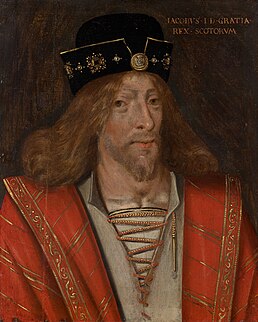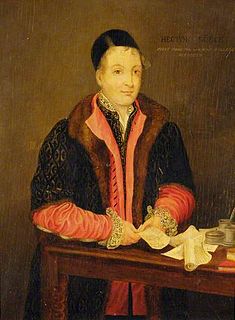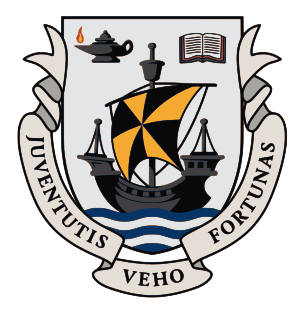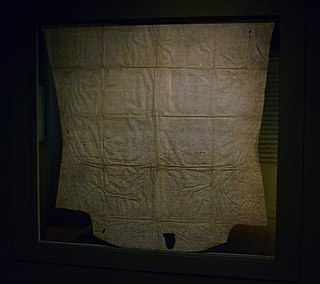| |||||
| Centuries: | |||||
|---|---|---|---|---|---|
| Decades: | |||||
| See also: | List of years in Scotland Timeline of Scottish history 1579 in: England • Elsewhere | ||||
Events from the year 1579 in the Kingdom of Scotland .
| |||||
| Centuries: | |||||
|---|---|---|---|---|---|
| Decades: | |||||
| See also: | List of years in Scotland Timeline of Scottish history 1579 in: England • Elsewhere | ||||
Events from the year 1579 in the Kingdom of Scotland .

James I was King of Scots from 1406 until his assassination in 1437. The youngest of three sons, he was born in Dunfermline Abbey to King Robert III and his wife Annabella Drummond. His older brother David, Duke of Rothesay, died under suspicious circumstances while being detained by their uncle, Robert, Duke of Albany. His other brother, Robert, died young. Fears for James's safety grew through the winter of 1405/6 and plans were made to send him to France. In February 1406, James was forced to take refuge in the castle of the Bass Rock in the Firth of Forth after his escort was attacked by supporters of Archibald, 4th Earl of Douglas. He remained there until mid-March, when he boarded a vessel bound for France. On 22 March English pirates captured the ship and delivered the prince to Henry IV of England. The ailing Robert III died on 4 April and the 11-year-old James, now the uncrowned King of Scots, would not regain his freedom for another eighteen years.

Hector Boece, known in Latin as Hector Boecius or Boethius, was a Scottish philosopher and historian, and the first Principal of King's College in Aberdeen, a predecessor of the University of Aberdeen.

The Advocates Library, founded in 1682, is the law library of the Faculty of Advocates, in Edinburgh. It served as the national deposit library of Scotland until 1925, at which time through an Act of Parliament the National Library of Scotland was created. All the non-legal collections were given to the National Library. Today, it alone of the Scottish libraries still holds the privilege of receiving a copy of every law book entered at Stationers' Hall.

Dollar Academy, founded in 1818 by John McNabb, is an independent co-educational day and boarding school in Scotland. The open campus occupies a 70-acre (28 ha) site in the centre of the town of Dollar in the county of Clackmannanshire, at the foot of the Ochil Hills.
Charles Croke was an English clergyman and Gresham Professor of Rhetoric.

The Scottish Renaissance humanist George Buchanan gave a long list of Scottish Kings in his history of Scotland—published in Latin as Rerum Scoticarum Historia in 1582—most of whom are now considered by historians to be figures of legend, or completely misrepresented. The list went back around 1900 years from his time, and began with Fergus I. James VI of Scotland, who was Buchanan's pupil, adopted the story of Fergus I as his ancestor, and the antiquity of the line was emphasised by the House of Stuart.

Walter Crum FRS (1796–1867) was a Scottish chemist and businessman. He became a Fellow of the Royal Society in 1844.
The Spanish blanks plot was an alleged pro-Spanish Catholic conspiracy in Scotland, discovered in late 1592. A number of letters to Spain were discovered, which included blank sheets signed by prominent nobles.
John Graham, 4th Earl of Montrose (1573–1626) was a Scottish nobleman, Earl of Montrose from 1608 to the 1620s. He was for a time Lord President of the Privy Council of Scotland.

The Jacobean debate on the Union took place in the early years of the reign of James I of England, who came to the English throne in 1603 as James VI of Scotland, and was interested in uniting his Kingdoms of England and Scotland. With one monarch on the two thrones there was de facto a "regnal union", but since James was very widely accepted in England, the debate was not on that plane. A political union was more controversial and is often referred to as a "statutory union", underlining the fact that the legal systems and institutions involved were different, and had had distinct historical paths. That wider union did not in fact come about in the 17th century, but at the time of the Union of England and Scotland in 1707, arguments from the earlier period were again put into circulation.
Thomas Buchan (c.1641–1724) was a Scottish professional soldier from a Catholic family in Aberdeenshire who served in the armies of France, the Netherlands and Scotland. He remained loyal to James II after the 1688 Glorious Revolution and participated in the War in Ireland before taking command of Jacobite forces in Scotland in February 1690. After the Highland chiefs submitted to William III in early 1692, he was given safe passage to France and later allowed to return home in 1703. He maintained links with the Stuart exiles and played a small role in the 1715 Rising but escaped punishment and died at Fyvie in 1724.
James Spottiswood was a Scottish courtier and Protestant bishop of Clogher.
George Martine, the elder (1635–1712) was a Scottish historian of St. Andrews.
Events from the year 1721 in Scotland.

The National Covenant was an agreement signed by many people of Scotland during 1638, opposing the proposed reforms of the Church of Scotland by King Charles I. The king's efforts to impose changes on the church in the 1630s caused widespread protests across Scotland, leading to the organisation of committees to coordinate opposition to the king. Facing royal opposition to the movement, its leaders arranged the creation of the National Covenant, which was designed to bolster the movement by tapping into patriotic fervour and became widely adopted throughout most of Scotland.